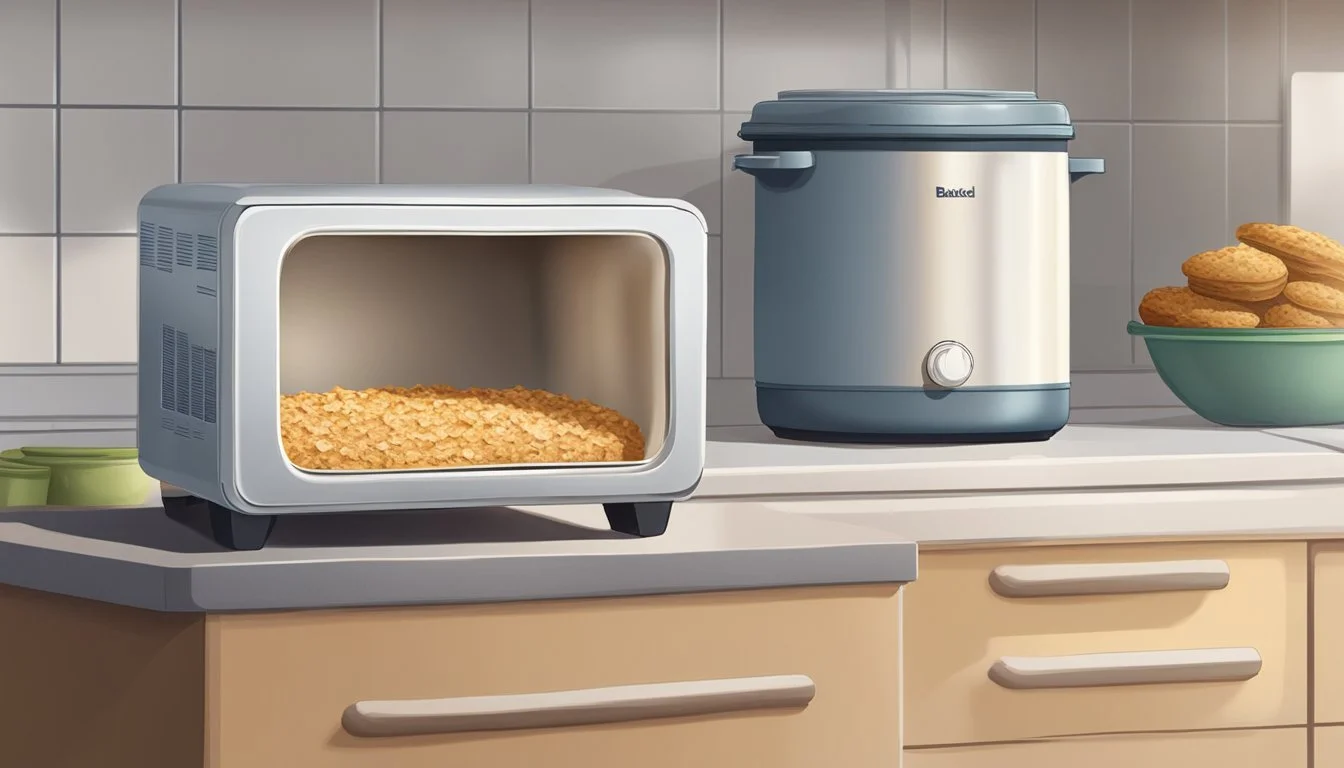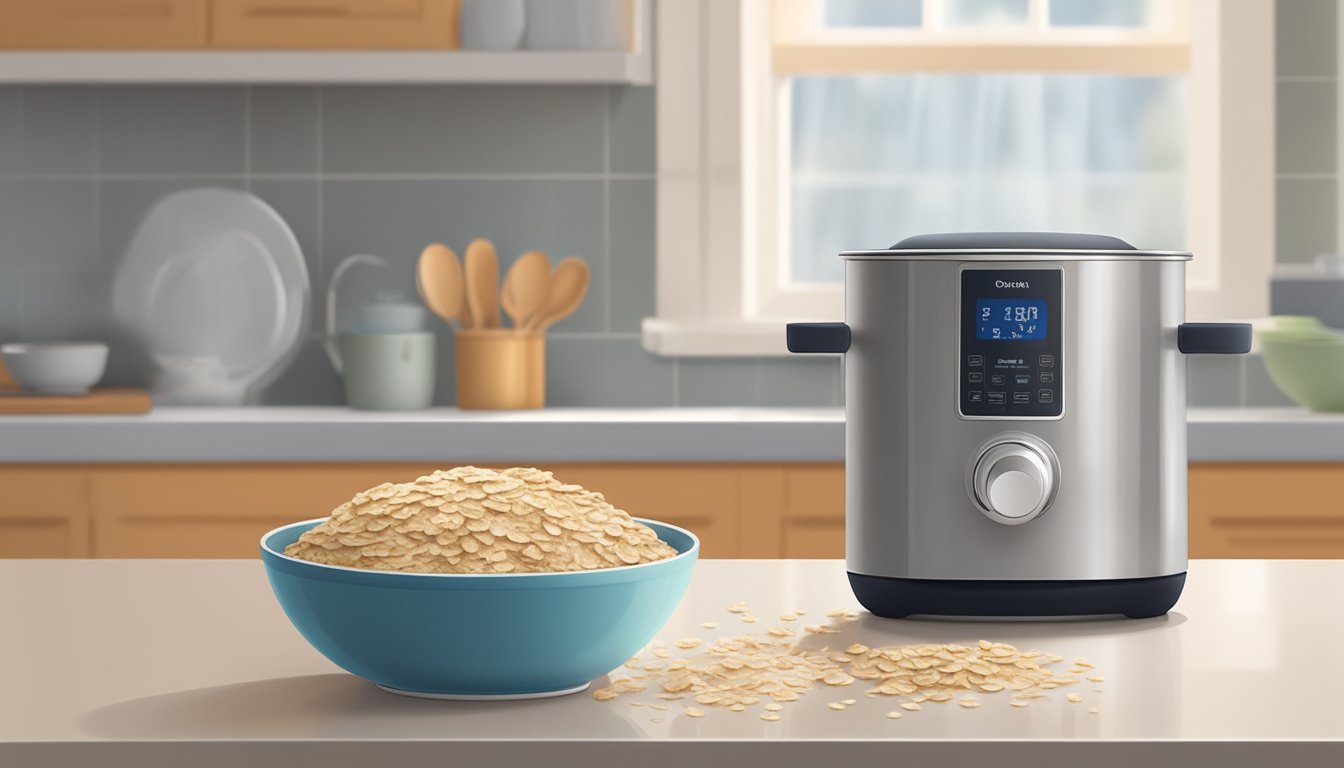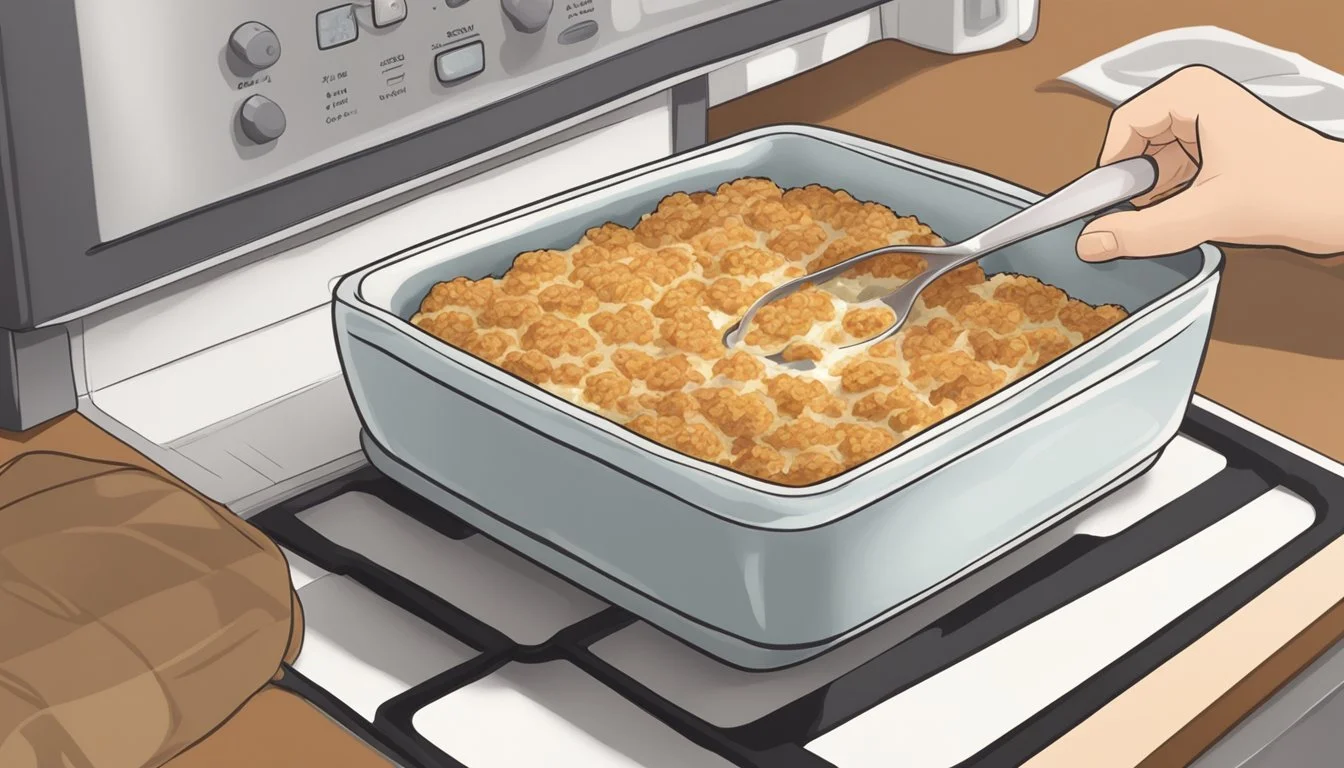Best Way to Reheat Baked Oatmeal
Ensuring Moisture and Taste Retention
Baked oatmeal is a comforting and nutritious breakfast option, but maintaining its texture and flavor during reheating can be challenging. To ensure that the dish remains moist and delicious, it’s essential to employ the right reheating techniques. Whether it's the next day or after being frozen, the goal is to revive the baked oatmeal without drying it out or altering its original taste.
There are several methods to reheat baked oatmeal, each with its own advantages. The stovetop method is gentle and provides control over the temperature, which is crucial to prevent scorching. Adding a touch of milk or water can help to restore the creamy consistency that might have been lost in refrigeration. Alternatively, the microwave offers a quick and convenient way to warm up the dish, employing short bursts of heat to evenly distribute warmth while preserving moisture.
The key to successfully reheating baked oatmeal lies in both the technique used and the addition of a bit of liquid to reintroduce moisture. It's important not to rush the reheating process, as a gradual increase in temperature helps in evenly warming the dish and retaining its inherent flavors. This careful approach ensures that the reheated oatmeal is just as satisfying as when it was first baked.
Understanding Baked Oatmeal
Baked oatmeal is a convenient and healthy option for meal prep that transforms traditional oatmeal into a more cake-like dish. It can be customized with various types of oats and additions, offering a nutritious breakfast that can be enjoyed throughout the week.
Varieties of Oats Used
Baked oatmeal recipes can vary depending on the type of oats used, each bringing a different texture and cooking time to the dish.
Steel-cut oats: They are the least processed form of oat grains and have a chewy texture. They take the longest to cook and provide a hearty, dense baked oatmeal.
Rolled oats: Also known as old-fashioned oats, they are steamed and then rolled to flatten. They are a common choice for baked oatmeal because they offer a good balance of texture and cook faster than steel-cut oats.
Quick oats: These oats are cut into smaller pieces and rolled thinner to cook quickly. They can be used in baked oatmeal for a softer overall texture, but they can sometimes result in a mushy dish if overcooked.
Benefits of Baked Oatmeal
Baked oatmeal offers several advantages that contribute to its popularity as a healthy breakfast option.
Nutrition: Oats are a whole grain and are high in fiber, which aids in digestion and has been linked to various health benefits such as lower blood cholesterol and steadier blood sugar levels.
Meal prep friendly: Baked oatmeal can be prepared in advance and stored, making it an ideal meal prep option for quick and nutritious breakfasts throughout the week.
Versatility: It can easily be customized with fruits, nuts, and spices, allowing for a variety of flavors to keep breakfast interesting.
Satiety: The combination of fiber and protein in oats can help one feel full longer, supporting weight management goals.
Preparation Guidelines for Optimal Reheating
Preparing baked oatmeal for reheating involves important steps that ensure the dish remains moist and flavorful. Adherence to specific cooking processes and storage recommendations can significantly enhance the outcome.
Cooking Process Essentials
For optimal reheating, one should start with correctly cooked oatmeal. It should be baked evenly, avoiding overcooking which can lead to dryness. Baked oatmeal typically reheats best when it retains some moisture. If the oatmeal is dry, adding a small amount of water or milk before reheating can help restore moisture. When reheating, using a low and slow approach ensures that the dish heats through without further drying out.
On the Stovetop: Gently simmer the pre-cooked oatmeal in a pot, stirring occasionally.
In the Microwave: Heat in a microwave-safe dish in 30-second increments, stirring in between.
Storage Recommendations
Proper storage is key to maintaining the quality of baked oatmeal. Pre-cooked oatmeal should be placed in an airtight container to lock in freshness and prevent it from absorbing other flavors from the refrigerator. The container should be sealed correctly and stored at temperatures below 40 degrees Fahrenheit to reduce the risk of bacterial growth. For those who make oatmeal in bulk as a meal prep idea, portioning it into mason jars or sealed plastic bags can facilitate easier reheating and serving.
Ensure airtight sealing to keep oatmeal moist.
Refrigerate promptly after it has cooled down.
By sticking to these guidelines, one ensures that their oatmeal not only reheats well but also maintains its original taste and texture as much as possible.
Reheating Baked Oatmeal
When reheating baked oatmeal, maintaining its moisture and flavor is key. Choosing the correct reheating technique can ensure the oatmeal retains its comforting texture and taste.
Oven Reheating Technique
One can reheat baked oatmeal in the oven to preserve its texture and to achieve even warmth. They should preheat the oven to 350 degrees Fahrenheit and place the oatmeal in an oven-safe dish. Covering the dish with aluminum foil can help retain moisture. Then, the oatmeal should be heated for approximately 10-15 minutes or until it's thoroughly warmed.
Stovetop Warming Method
To reheat baked oatmeal on the stovetop, one should place the oatmeal in a pot over low to medium heat. To prevent the oatmeal from drying out, they may add a splash of water or milk. Continuous stirring for about 5 minutes will evenly warm the oatmeal and rehydrate it to a creamy consistency.
Microwave Reheating Approach
Reheating baked oatmeal in the microwave is a quick option. The oatmeal should be placed in a microwave-safe bowl, and if it appears dry, a small amount of water or milk can be added. It is advisable to heat in 30-second increments, stirring between each, until the oatmeal is completely heated through. This method typically takes 1-2 minutes depending on the microwave's power and the quantity of oatmeal.
Maintaining Moisture and Flavor
When reheating baked oatmeal, it's vital to preserve its creamy texture and rich flavors. Careful addition of liquids can restore moisture, and thoughtful use of toppings and add-ins can enhance taste and texture.
Adding Liquids for Moisture
To prevent baked oatmeal from drying out during reheating, one can introduce a modest amount of liquid. Here are two options:
Milk: Adding a few tablespoons of milk before reheating can help maintain the oatmeal’s creamy consistency. Whether one chooses dairy or a plant-based alternative, the liquid should be distributed evenly.
Type of Milk Benefit Cow's milk Adds creaminess and richness Almond milk Introduces a nutty flavor and is low in calories Soy milk Offers a protein boost and a mild taste
Water: A tablespoon or two of water is sufficient for reintroducing moisture without altering the flavor profile.
Toppings and Add-Ins
Toppings and add-ins not only complement the oatmeal but also contribute to its overall moisture and flavor:
Fruits: Adding fresh or dried fruits like berries, banana slices, or raisins can provide natural sweetness and a contrasting texture.
Nuts and Seeds: A sprinkle of nuts, such as almonds or walnuts, and seeds like chia or flaxseeds add crunch and nutritional value.
Sweeteners and Spices: A drizzle of maple syrup or a dash of cinnamon can enhance the oatmeal’s flavor significantly.
Nut Butters and Yogurt: Incorporating a spoonful of nut butter or a dollop of yogurt can boost creaminess and introduce new flavor dimensions.
Best Practices to Avoid Spoilage
Ensuring baked oatmeal remains moist and flavorful upon reheating starts well before the oatmeal hits the microwave or stovetop. Proper storage and handling are paramount to prevent spoilage and the growth of bacteria, thereby extending the shelf life of the meal.
Safe Food Handling
To discourage bacteria and preserve the quality of baked oatmeal, one should follow these steps:
Cool Quickly: After baking, allow oatmeal to cool to room temperature within two hours to minimize the time it spends in the "danger zone" (between 40°F and 140°F), where bacteria can grow rapidly.
Store Properly: Transfer the cooled oatmeal to an airtight container. Seal it to protect against contaminants and moisture loss.
Refrigerate Promptly: Place the container in the refrigerator immediately to keep it below 40°F, inhibiting bacterial growth.
Identifying and Preventing Bacteria
Understanding and preventing the conditions that favor bacteria is key to maintaining the integrity of the meal. Here is what to keep in mind:
Assessment Before Reheating: Before reheating, inspect the oatmeal for any signs of spoilage such as an off smell, discoloration, or visible mold, which indicates bacterial presence.
Hygiene: Ensure utensils and surfaces used for preparing and reheating oatmeal are clean, reducing the risk of cross-contamination.
Meal Planning: Incorporate the oatmeal into the meal plan within 3-4 days while it is still fresh, reducing the chance for bacteria to establish a breeding ground.
By adhering to these straightforward practices, one maximizes both the shelf life and the sensory qualities of baked oatmeal.
Creative Ideas for Leftover Oatmeal
Leftover oatmeal can be transformed into a variety of delightful and creative dishes. Whether one prefers savory or sweet, the versatility of oatmeal allows it to be repurposed effectively without compromising on flavor or texture.
Savory Transformation
One can revitalize leftover oatmeal by steering it into the realm of savory meals. For an easy meal prep, oatmeal can be mixed with favorite toppings such as sunflower seeds, fresh fruit, or a dollop of peanut butter. It offers a hearty base for a nutritious breakfast or snack. Here's a simple way to give it a savory twist:
Mix in sautéed vegetables and a source of protein for a quick, balanced dish.
Add cooked, shredded chicken, and season with herbs for a comfort food experience.
Top with a fried egg and a sprinkle of cheese for a rich yet healthy meal.
Dessert Options
Transforming leftover oatmeal into a dessert is a delicious way to ensure it doesn't go to waste. Incorporate ripe bananas for natural sweetness, or stir in dried fruit to enhance the flavor profile. For the best results:
Make oatmeal muffins or cookies, adding a mixture of dried fruit for a chewy texture.
Prepare an oatmeal crumble topping for fruit-based desserts.
Create chilled oatmeal bars with a layer of peanut butter and a topping of fresh fruit.
Leftovers offer a canvas for culinary creativity, and with these suggestions, one can achieve delightful results that are both delicious and nutritious.
Conclusion and Key Takeaways
When one chooses to reheat baked oatmeal, the goal is to restore its original texture and flavor. Microwave and stovetop methods are the most common techniques used for reheating. With the microwave, it's important to heat in short intervals, checking frequently to prevent overdrying. Adding a splash of water or milk can help maintain moisture.
The stovetop method allows for more control over the reheating process. It requires simmering the oatmeal on low to medium heat and stirring occasionally to ensure even heating. One might also add a bit of liquid to achieve the desired consistency.
Method Action Note Microwave Heat in 30-second bursts; stir. Add liquid to prevent dryness. Stovetop Simmer on low/medium heat; stir. Monitor to avoid burning.
Regardless of the method, it's crucial to allow enough time for the oatmeal to be heated thoroughly but not so much that it becomes too dry or loses its flavor. When serving, one can personalize the dish with their favorite toppings, giving it a fresh twist even after reheating. By following these guidelines, one ensures that the oatmeal remains moist and flavorful, providing a delightful meal as if freshly baked.







